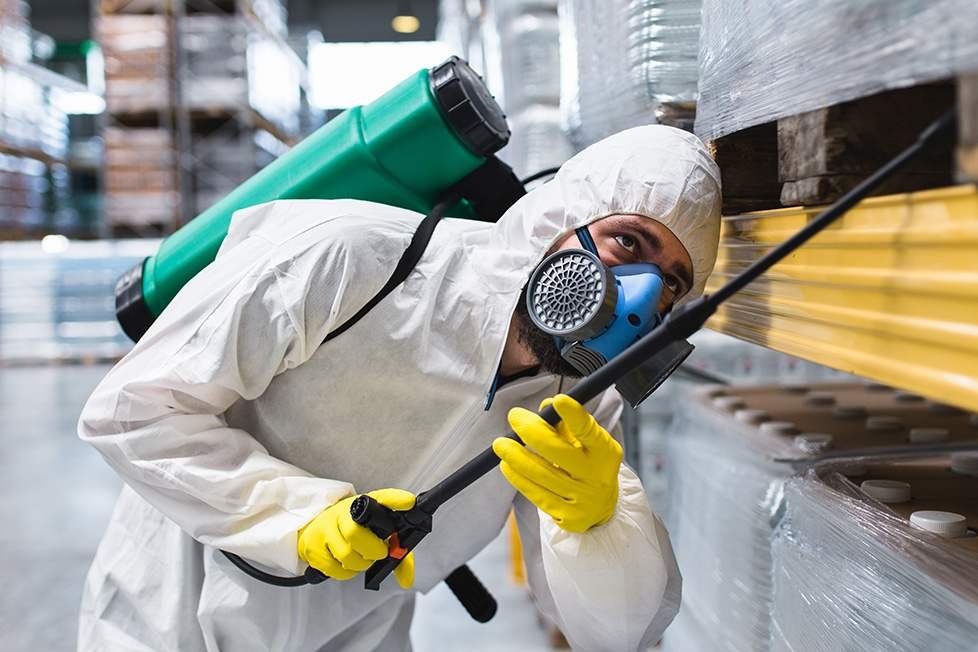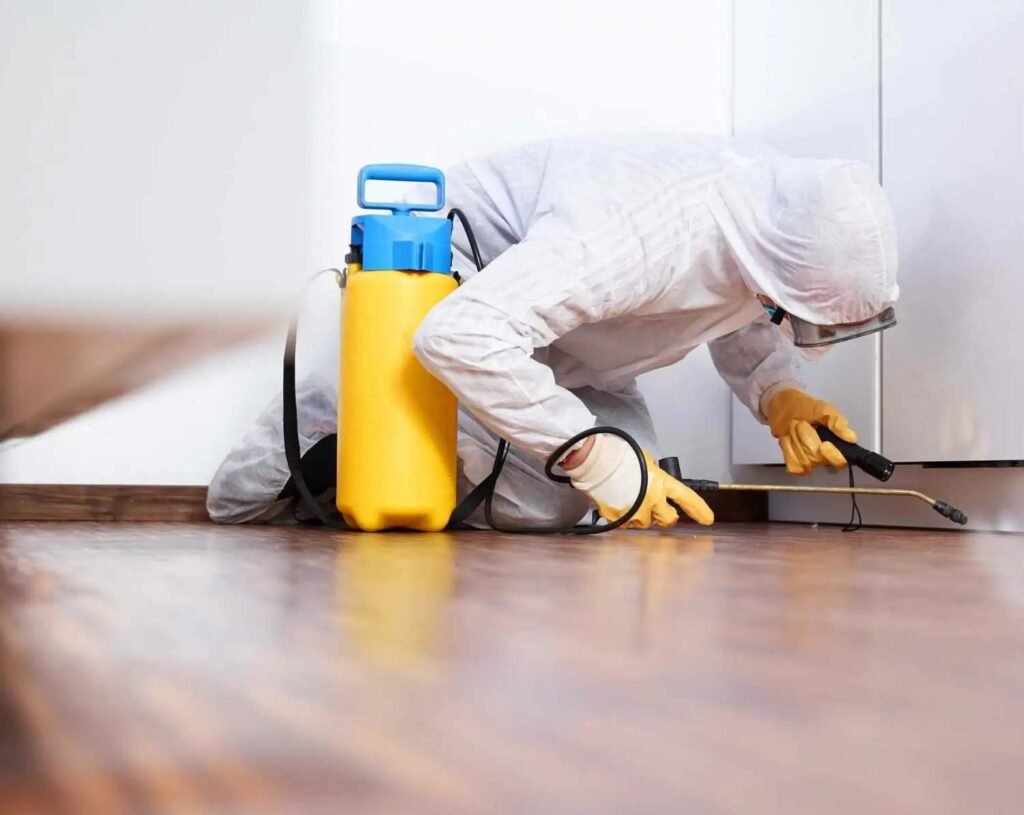When it comes to pest control services in NYC, they’re the heroes who rid our spaces of unwanted visitors like cockroaches, rats, and bed bugs. Complete Bed Bug Exterminating, for example, specializes in eradicating those pesky bed bugs that can turn a peaceful night’s sleep into a nightmare. These services typically start with a thorough inspection to identify the extent of the infestation. Then, they use a combination of treatments like pesticides, heat treatments, or traps to eliminate the pests and prevent their return. It’s like having your own personal bug-busting squad!
Before we dive into the nitty-gritty of pest control, let’s understand the types of pests that plague NYC. From the notorious cockroaches and rats to bed bugs and wildlife, the city presents a diverse array of challenges for pest control experts.
These resilient critters are a common sight in NYC, thriving in the city’s nooks and crannies. Pest control services tackle roach infestations using a mix of baits, traps, and insecticides.
Rats are another major concern, particularly in urban areas. Experts use bait stations, traps, and exclusion methods to keep these rodents at bay.
Bed bugs have become a significant problem, especially in densely populated areas. Specialized services like Complete Bed Bug Exterminating use heat treatments and insecticides to eradicate these elusive pests.
Pest control services also deal with spiders, mosquitoes, raccoons, squirrels, and more, offering comprehensive solutions for any pest-related issue.

In addition to employing the pest control arsenal, NYC homeowners can implement seasonal pest control tips to further safeguard their homes. During spring, sealing cracks and gaps is crucial to ward off ants, bees, and mosquitoes. In summer, keeping food tightly sealed, maintaining cleanliness in outdoor areas, and trimming vegetation helps deter flies and rodents. Fall calls for removing fallen leaves and debris to prevent rodents and spiders from seeking shelter, while winter requires insulating and sealing windows and doors to keep out overwintering pests like mice and spiders.
The first step is always a thorough inspection to assess the extent of the infestation. This helps tailor the treatment plan to the specific pest problem.
Insecticides and pesticides are commonly used to target pests like roaches, ants, and bed bugs. These treatments are applied strategically to minimize environmental impact while maximizing effectiveness.
For rodents and certain insects, baits and traps are effective in capturing and eliminating pests. They are placed strategically based on pest behavior and movement patterns.
Particularly for bed bugs, heat treatments are highly effective. They raise the temperature in infested areas to levels that are lethal to bed bugs but safe for humans and pets.
Preventing pests from entering in the first place is key. Pest control services may seal up entry points, install barriers, or implement other exclusion techniques to keep pests out.
Dealing with larger pests like raccoons or squirrels requires specialized techniques such as trapping and relocation.
Proactive pest prevention encompasses a range of residential pest control services aimed at preventing infestations before they occur. These services often include regular inspections, sealing entry points, implementing exclusion methods, and offering customized treatment plans based on the property’s specific needs. By taking a proactive approach, homeowners can effectively minimize the risk of pests taking hold in their homes, ensuring a pest-free and comfortable living environment year-round.
Scheduled inspections can catch potential pest issues early, allowing for swift intervention before infestations take hold.
Closing off entry points and securing vulnerable areas helps prevent pests from gaining access to your home or business.
Pest control services often provide valuable information on pest prevention practices, educating clients on proper sanitation, storage, and landscaping techniques.
This holistic approach combines various strategies, including chemical treatments, habitat modification, and monitoring, to achieve long-term pest control goals.
Technology plays a pivotal role in modern commercial pest control services, enhancing efficiency and effectiveness. These services leverage smart monitoring devices, such as IoT sensors, to track pest activity in real-time and implement targeted interventions. Digital mapping and analysis tools aid in identifying pest hotspots and optimizing treatment strategies for commercial spaces. Advanced pesticide formulations and heat treatment equipment further contribute to comprehensive pest management solutions, ensuring a pest-free environment for businesses and their customers.
IoT devices and sensors can track pest activity in real-time, allowing for proactive interventions.
GIS technology helps pest control professionals map out infestations, identify hotspots, and optimize treatment plans.
New formulations of pesticides are safer, more targeted, and environmentally friendly, reducing risks to humans and non-target species.
Sophisticated heat treatment systems ensure precise and effective eradication of bed bugs and other heat-sensitive pests.
Environmental concerns and sustainability are integral to fly control services, prioritizing eco-friendly methods to manage fly populations. These services often utilize biological controls, such as introducing natural predators like parasitic wasps, to reduce fly numbers without relying heavily on chemical pesticides. Integrated pest management (IPM) strategies are also employed, emphasizing prevention, habitat modification, and monitoring to minimize environmental impact. By adopting sustainable practices, fly control services can effectively manage fly infestations while preserving the ecosystem and promoting a healthier environment.
Using organic, botanical, or eco-friendly insecticides reduces chemical exposure and environmental impact.
IPM focuses on non-chemical strategies whenever possible, emphasizing prevention, monitoring, and habitat modification.
Proper disposal of waste materials, including pesticides and pest carcasses, follows strict guidelines to prevent pollution.
Educating clients about sustainable pest control practices encourages eco-conscious behavior and reduces reliance on harsh chemicals.

With so many options available, selecting the right pest control service can seem daunting. Here are some key factors to consider when making your choice.
Look for companies with a proven track record and experienced technicians who understand NYC’s unique pest challenges.
Ensure that the company is licensed, insured, and adheres to industry standards and regulations.
Check online reviews and ask for references to gauge the company’s reputation and customer satisfaction.
A one-size-fits-all approach rarely works in pest control. Choose a service that offers tailored solutions based on your specific needs and circumstances.
Clear communication about treatment plans, costs, and expectations is essential for a positive experience.
What do NYC exterminators do?
NYC exterminators are skilled professionals who specialize in identifying, eliminating, and preventing pest infestations in homes, businesses, and public spaces. They use a combination of techniques such as chemical treatments, traps, and exclusion methods to target pests like cockroaches, rodents, bed bugs, and more. Additionally, they may offer proactive measures such as regular inspections and pest-proofing to ensure long-term pest control.
What is the purpose of pest control services?
The purpose of pest control services is to manage and eradicate unwanted pests such as insects, rodents, and wildlife from residential, commercial, and public spaces. By doing so, they aim to protect human health, prevent property damage, and maintain a safe and hygienic environment for occupants. Pest control services also often focus on implementing preventive measures to minimize the risk of future infestations.
What do pest control actually do?
Pest control professionals assess, manage, and eliminate pest infestations in homes, businesses, and other environments. They use a combination of techniques such as inspections, chemical treatments, traps, and exclusion methods to control and eradicate pests like insects, rodents, and wildlife. Additionally, they may provide education and advice on preventive measures to minimize the risk of future pest problems.
What is done in pest control?
In pest control, professionals begin by conducting thorough inspections to identify the type and extent of pest infestations. They then implement targeted treatments such as chemical sprays, baits, traps, or heat treatments to eliminate pests. Finally, pest control services may offer ongoing monitoring and preventive measures to ensure long-term pest management.
Is pest control safe for humans?
When conducted by trained professionals using approved methods and products, pest control is generally safe for humans. However, it’s crucial to follow safety guidelines such as staying out of treated areas until they are deemed safe for reentry. Additionally, using eco-friendly or low-toxicity options can further minimize potential risks to human health.
In conclusion, pest control services in NYC play a crucial role in maintaining healthy and hygienic environments. From battling roaches and rats to eradicating bed bugs and educating clients about preventive measures, these experts are dedicated to ensuring pest-free spaces for residents and businesses alike.
By understanding the pests, employing effective strategies, embracing technology, promoting sustainability, and choosing the right service provider, we can all contribute to a pest-free future in the city that never sleeps. So, the next time you encounter an unwelcome critter, remember that help is just a phone call away, and together, we can keep NYC pest-free and thriving.